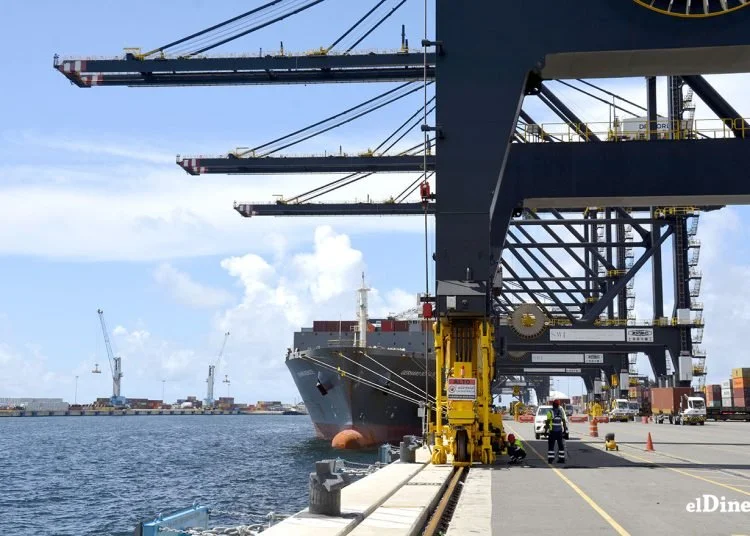Santo Domingo.- According to data from the Central Bank of the Dominican Republic (BCRD), in 2022, the country generated total transactions exceeding US$30 billion in imports and US$13 billion in exports. The shipping industry played a significant role in these figures, with 93.71% of imports and 44.50% of exports being transported via sea routes.
The Dominican Republic has approximately 23 ports, of which 16 are commercial, eight serve as tourist terminals or anchorages, and four are marinas or sports docks, according to the Dominican Port Authority (Apordom). Out of the numerous ports, five accounted for 67% of the total vessel movements in 2022: Río Haina, Puerto Caucedo (DP World), Santo Domingo, and Puerto Plata.
Each port has its specialization based on the type of products it receives. For example, the Río Haina port, particularly Haina Occidental and its Itabo terminal, is specialized in unloading mineral coal. The port has the capacity to receive 15 vessels and handle various types of cargo, including general cargo, containers, roll-on/roll-off, liquids, and dry bulk materials.
The DP World’s Caucedo Multimodal port, which started operations in 2003, is used for importing containerized and loose cargo ships. It has four berths and is involved in the import of bulk fertilizers and wheat, as well as the export of cement, clinker, sugar, molasses, and bagged fertilizers.
Other ports, such as AES – André’s terminal in Boca Chica and Punta Cana Macao, EGE Haina, Sistemas de Boyas (Coyen Trix), and Coastal Dominicana, have specific capacities for unloading fuel, liquefied natural gas (LNG), liquefied petroleum gas (LPG), and other petroleum products.
The ports play a vital role in facilitating international trade and supporting the import and export activities of the Dominican Republic, contributing to the country’s economic growth and development.

